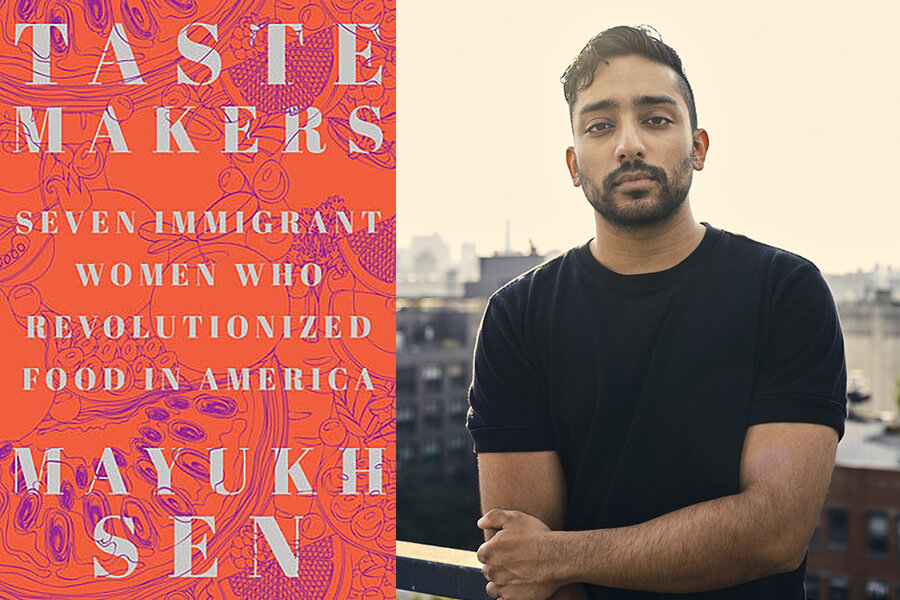Q&A with Mayukh Sen, author of ‘Taste Makers’
Loading...
In his book “Taste Makers: Seven Immigrant Women Who Revolutionized Food in America,” author Mayukh Sen offers biographical sketches of individuals who found unexpected success as chefs and cookbook authors after arriving in the United States in the 20th century.
Q: How does American culinary history help us understand the immigrant experience?
Food illuminates so much of the immigrant experience as it relates to the challenges of establishing a sense of home in an otherwise extremely chaotic and disorienting time. What I loved about each of these women’s stories is that they used food to tell Americans who they were and where they came from. Food is not so potent a tool that it can overcome basic structural issues for those who belong to marginalized communities, but it may be a first step in allowing some people to see someone else’s humanity.
Q: What discoveries did you make as you pieced together the narratives?
I wanted to make sure I presented these women speaking in their own voices as much as possible. Some were totally content with subsuming the taste of their home country to appease the American palate. They wanted the validation of white America and white American institutions that had a lot of power and capital influence. [For example, Mexican Elena Zelayeta] found herself writing more about California foods to reflect her [new] sense of place and the identity she attached to that. But the two women I ended my book on, [Iranian] Najmieh Batmanglij and [Jamaican] Norma Shirley, were both women who cooked for their own people. They didn’t necessarily cook for white Americans. I found that so fascinating and inspirational. They found fulfillment in creating for their own communities and serving them as their chief aim.
Q: Why did you include Julia Child?
Her legacy just looms so large over the story of these women and food culture in America in general. She established the standard against which so many figures in the culinary world are judged. So many women throughout culinary history – even beyond America – have been dubbed by the press as “the Julia Child” of their origin countries. I wanted to have a mix of more well-known figures, like Marcella Hazan, alongside women many readers may not be familiar with [such as Chao Yang Buwei from China and Julie Sahni from India]. [French chef and contemporary of Child] Madeleine Kamman was someone who was determined to call out the structural inequities that are baked into the American food establishment. She wrote many cookbooks and had a truckload of awards but is remembered as the person who criticized Julia Child.
Q: What do you hope readers will come away with after reading your book?
America is a wonderful cornucopia of so many world cuisines. I hope readers understand that for this reality to be possible – where you do have all these wonderful foods at your disposal – there is a lot of struggle involved. These are just seven women. They’re not the only seven women who are responsible for creating these wonderful conditions in which Americans cook and eat today. They’re just a glimpse into the many immigrants who labored tirelessly to introduce their foods to this country. They faced many challenges working in a system that was not necessarily designed to accommodate them.
I’m sure that there are going to be some parts of this book that warm readers’ hearts, but I hope that there are others that make them think a bit harder about how they perceive food and how they measure the worth and value of immigrant lives in this country.
Q: Your mother immigrated to the United States from India in the 1980s. Do you see her reflected in the stories of these women?
She had so much resilience, and she has weathered more in a single lifetime than most people. ... I thought about how difficult it must have been for her to make a comfortable life for her children. I hope that when she reads this, she sees a fraction of her own immigrant story.








